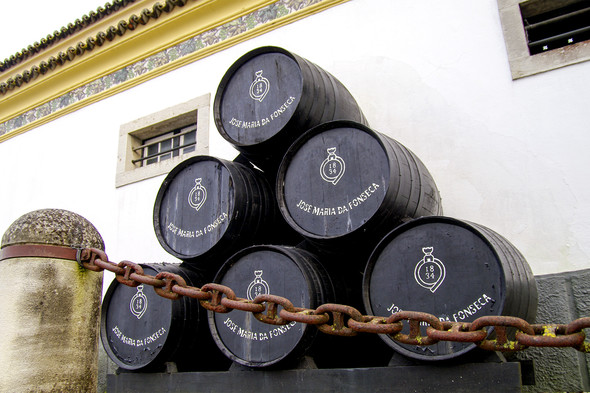José Maria da Fonseca have sent a barrel of their Moscatel around the world on the Sagres tall ship three times in recent years. Why on earth would you want to do this, you might be asking. Well, these three experiments re-enact some famous journeys of Portuguese sail ships in the nineteenth century, when barrels of wine were frequently sent around the world by ship, as it was believed to improve their flavour and accelerate the aging process, as for Madeira. This was also done in the case of Moscatel de Setúbal, thus creating the mythic wines of Moscatel de Setúbal Torna Viagem (round the world Moscatel). It was believed that this helped to create softer, velvety wines, with increased complexity and a hint of saltiness. This famous superior wine was darker and of different character to the testimony barrel which was kept in the cellar for comparison purposes.
The winery, founded in 1834, now run by the seventh generation of the family, has a wide range of table wines, fortified wines and sparkling wines, and exports 80% of its production. It currently uses 160 different grape varieties in its wines. A record for a single winery? It is known for its Lancer rosé brand, created in 1944 and the red blend of Castalão, Aragonez and Trincadeira, Periquita, created in 1850. Indeed, Periquita was the first wine they sold in bottle, previously wine had only been sold in barrel. In the Periquita wine cellar, where they currently store 100,000l of wine, they not only use US oak barrels, but also larger mahogany casks originating from Brazil and Africa.
However, the jewel in its crown has to be its Moscatel de Setúbal, the brand created in 1849. This luscious, fortified wine ranges in colour from a beautiful dark gold through to deep amber. The young wine is bursting with apricot, orange peel, nuts and honey; as it ages, it darkens and develops aromas and flavours of caramel, hazelnuts, figs, truffles and dried fruits. A delicious sweet treat, winning prizes since 1855.
It can be produced from both the white (branco) or red (roxo) variety of the Moscatel grape. Fermentation is arrested with a neutral grape brandy to maintain the fruit flavours of the grape. Recently, experiments have been made using Armagnac or Cognac, producing lighter, crisper versions, which are a little less sweet.
Their private collection, housed in the traditional manor house built in the nineteenth century, with its beautiful façade and gardens, includes 11,000 bottles of Moscatel, going back each year, some of which are nearly 200 years old. We can but dream.






